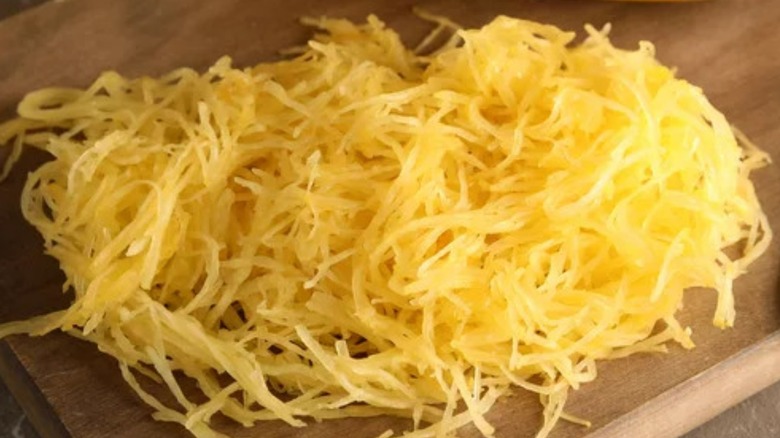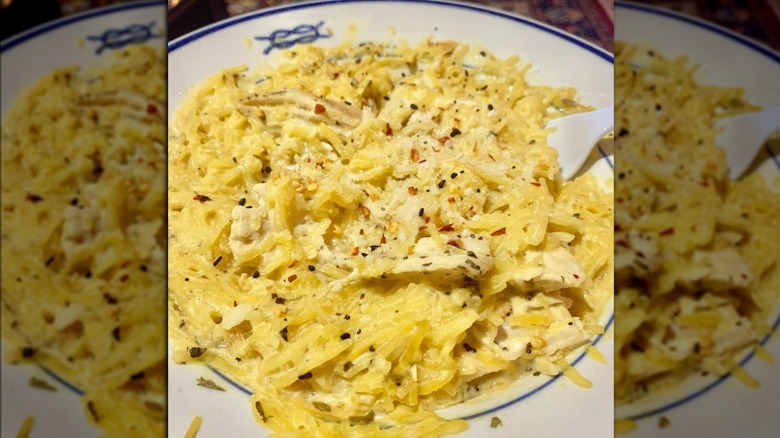The Best Cooking Method To Get The Most Out Of Spaghetti Squash
If there were an awards show for vegetables, spaghetti squash would be among our nominees for best multi-tasker. Although the winner might turn out to be spinach, which shines in everything from salads to sautés to smoothies, our vote would still go to this remarkable winter squash because it does something that literally no other vegetable can do. Upon cooking, it turns its nutrient-rich, fiber-packed veggie self into actual spaghetti-like strands — without the bother of having to assemble and clean a veggie-spiralizing device.
The only catch is that it's easy to mess up spaghetti squash — even if you're precisely following a credible recipe. That's because getting the most out of spaghetti squash means yielding spaghetti-like strands. But if you cook your spaghetti squash for too long, its flesh ceases to be spaghetti-like at all (though it's still quite tasty). And if you cook your spaghetti squash whole — i.e., without slicing it first — that will leave your strands watery, if not mushy.
Indeed, the best cooking method for getting the most out of your spaghetti squash involves drawing as much moisture out of the flesh as you can while still encouraging the development of long, al dente spaghetti-like strands. And that involves a few tricks that many recipes take for granted you already know. We, on the other hand, take nothing for granted!
Four steps to incredible spaghetti squash
To get the most authentically spaghetti-like strands from your spaghetti squash, you'll want to incorporate four simple steps into your existing repertoire. The first is cutting the squash in half horizontally. Although some recommend slicing stem to stump, we've found that yields shorter strands, and we prefer ours long. The second is — after scraping out the seeds — generously sprinkling salt on the flesh and letting the halves sit for 20-30 minutes. This draws out lots of excess moisture, which you should dab away with paper towels before cooking.
The third is brushing the halves with oil and placing them on a cookie sheet — face down, because this encourages any remaining excess moisture to drain from the flesh. And we specify a cookie sheet, as opposed to a sheet pan, because cookie sheets are rimless, which allows for better airflow — and better airflow encourages drained moisture to evaporate rather than pool. The fourth is roasting at a high temp (400 degrees F) but checking after the first 20 minutes to make sure the flesh isn't overcooking (which leads to a mushy and decidedly un-spaghetti-like experience).
Flip over one of the halves and scrape its surface with a fork. If the flesh separates into firm — but not crunchy — strands, then you're all set. If not, continue cooking for 5-minute intervals. From there, it's just a matter of scraping out your al dente spaghetti-like strands and getting saucy with it.

